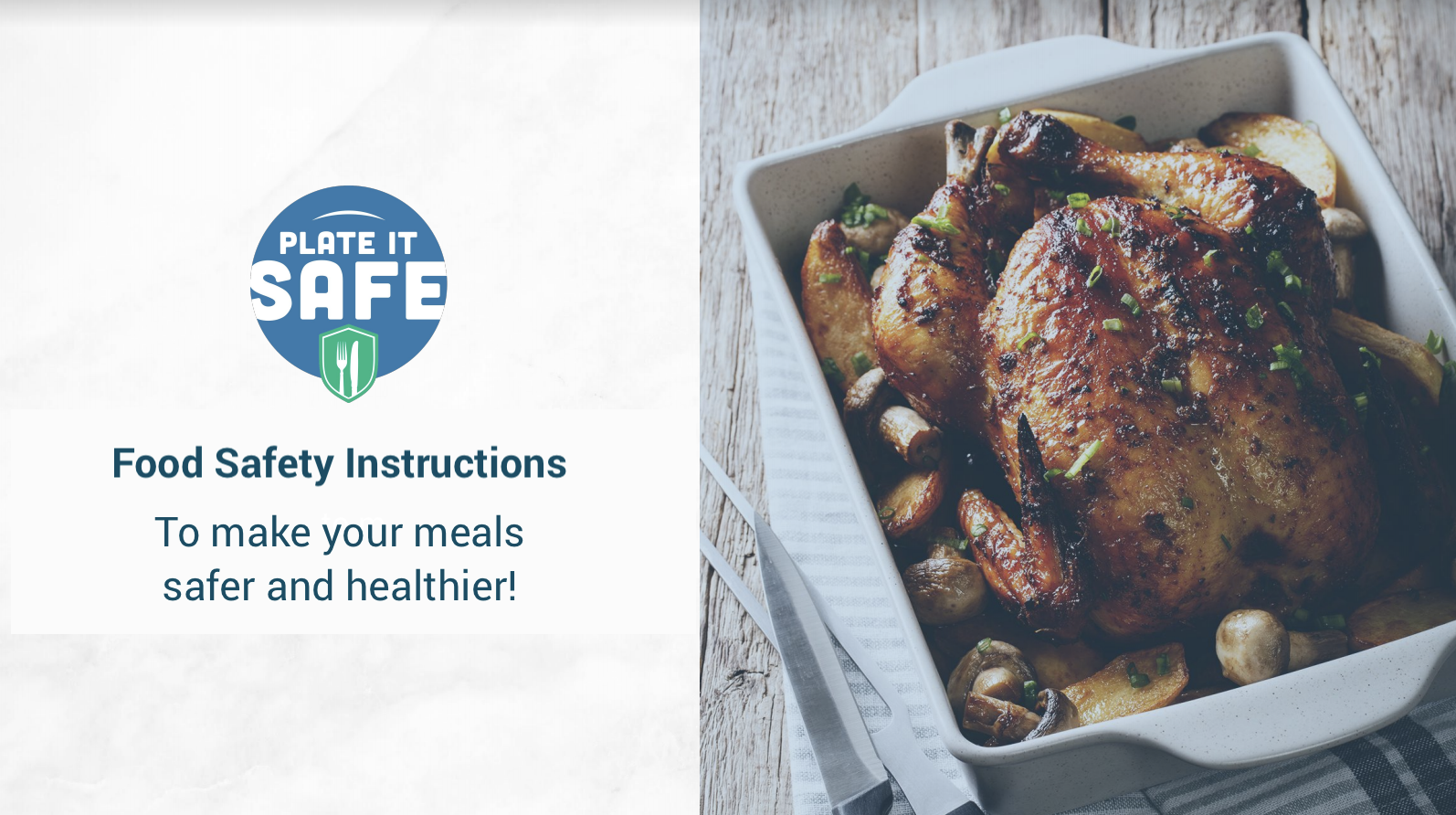Food Safety Instructions
While cooking and following recipes, it’s easy to often forget or overlook important steps to ensure food safety. Just by knowing a few important tips, you can prevent many food-borne illnesses.

Have you ever been unsure of whether your food was fully cooked through?
Should you rinse meat before cooking?
Or how to properly wash produce?
To help others prevent foodborne illnesses and promote safe cooking habits, I have decided to participate in a campaign for food safety called Plate It Safe. It is a nationwide food movement recently launched by the Water Quality and Health Council aimed at helping to educate home cooks and consumers on how to safely prepare and cook recipes. Going forward, you’ll notice new icons featured on my blog recipes that are indicative of each food safety guideline listed below.
Hand Hygiene
- At the beginning of each recipe and after handling raw meat, poultry, seafood, or eggs, as well as raw fruits, vegetables and nuts, make sure to wash your hands with soap and water for 20 seconds.
- JJ’s TIPS
- Also, remember where your hands touch right after you have handled raw meats like poultry. e.g. If you touched the faucet handle then you should remember to wash that too. Or better yet, use plastic gloves when touching meat and then discard it once done.
Preventing Cross-Contamination
- Make sure to wash and sanitize cutting boards, counters, utensils and serving plates after touching raw meats, poultry, seafood, or eggs.
- MY TIPS – Even though you may be cooking everything, it’s good to cut your ingredients in this order (vegetables first -> meat) or use different cutting boards entirely.
- I usually use plastic cutting boards (thin or thick) to cut chicken or raw meat and then just never use it again until it goes into the dishwasher.
- Do not reuse marinades after use on raw foods. And btw, the marinade becomes watery so it will not work the same way.
- Do not rinse meat or poultry in the kitchen sink. There is no reason to rinse raw meat or poultry and doing so is not safe because it can spread germs onto surrounding surfaces.
Preparing Produce
- Gently rub produce under cold running water.
- Scrub firm produces like potatoes and carrots with a clean vegetable brush under running water.
- JJ’s TIPS – I like to use brushes for potatoes (when cooking with skin) and carrots. I like to rub vegetables with coarse salt with my hands for produce like cucumbers and radishes (esp. freshly picked from the garden which still has all the prickly stuff) and you are using the skin. The salt will rub off the prickly stuff while also killing germs.
Cooking Temperatures
- When cooking, make sure that your protein reaches a safe internal temperature on your food thermometer. (refer to the table below)
| Protein | Temperature/Appearance |
|---|---|
| Beef, pork, veal and lamb (roast, steaks and chops) | 145° F With a three-minute rest time after removal from the heat source |
| Beef, pork, veal and lamb (ground) | 160° F |
| Poultry (whole, parts or ground) | 165° F |
| Eggs and egg dishes | 160° F Cook boiled eggs until both the yolk and the egg white are firm; scrambled eggs should not be runny |
| Leftovers | 165° F |
| Finfish | 145° F |
| Shrimp, lobster and crabs | Flesh is pearly and opaque |
| Scallops | Milky white, opaque and firm |
| Clams, oysters and mussels | Shells open during cooking |
Sanitizing Kitchen Surfaces
- When sanitizing kitchen surfaces before, during and after preparing food, one way to sanitize food-contact surfaces is to combine 1 tbsp. of regular, unscented chlorine bleach in 1 gallon of water OR ¾ tsp. of bleach in 1 quart of water. Clean the surface of food debris first, using soapy water, then rinse with clear water. Then apply the diluted bleach solution and let air dry.
Storing Food
- When saving leftovers, keep your refrigerator at 40°F or below. Refrigerate leftovers in shallow containers within two hours of cooking and dispose of leftovers after 3-4 days.
- JJ’s tips – in my 15 Vegetable Side dishes post, I also share a table that tells you how long each banchan will keep in your fridge.
I hope that this will help to PlATE IT SAFE. Please spread the knowledge of safe food preparation and storage so that you can all feel confident with and enjoy the dishes that you prepare 🙂 Nothing will ruin a fantastic meal more than a food-related illness.
Additional Resources
- Food Safety Guideline (a printable one page) – print it and post it on your fridge!
- Printable Safe Internal Food Temperature table (printable table)
Thank you, everyone, for reading this public announcement brought to you with help from the Water Quality and Health Council!
Happy Holidays!
XOXO ❤️
JinJoo


















Leave a Review